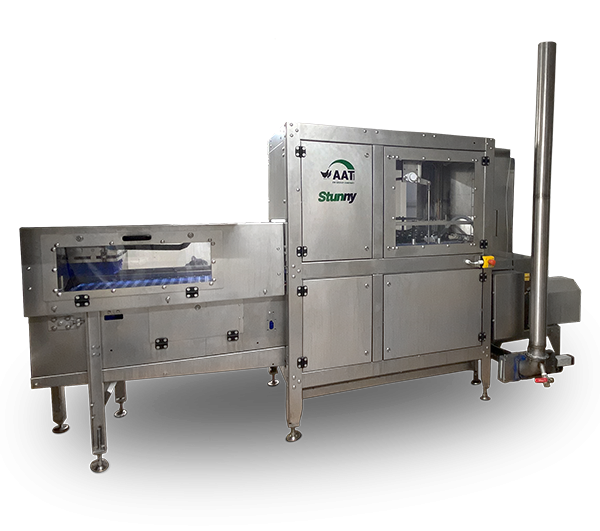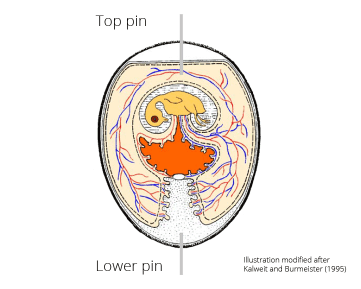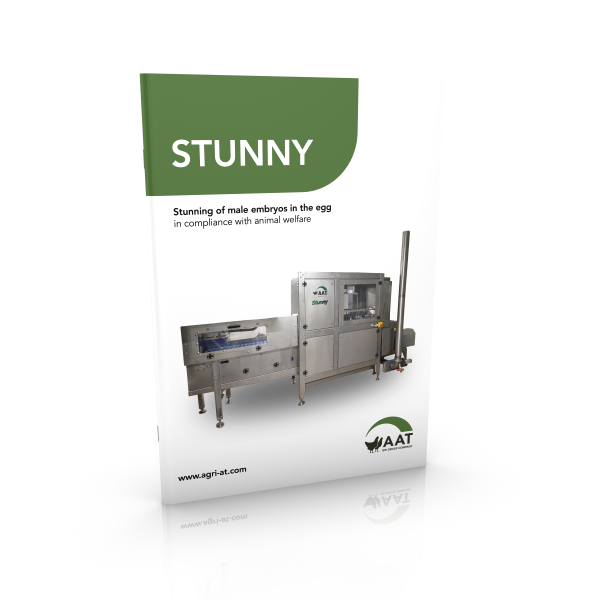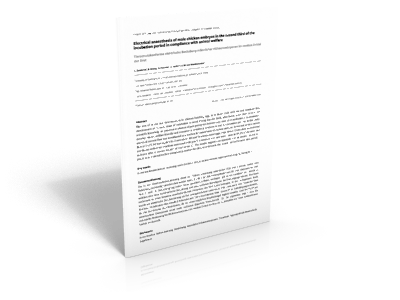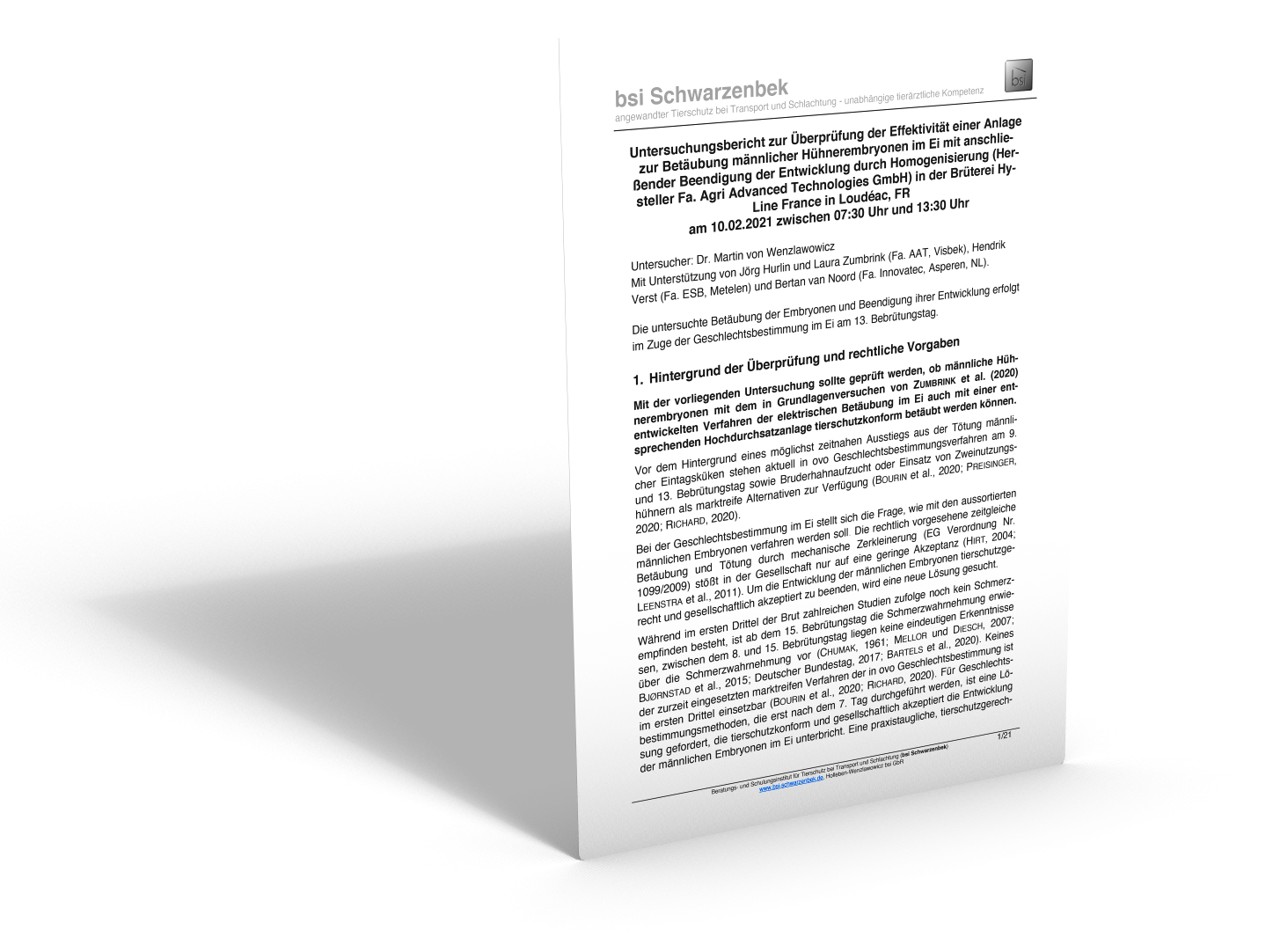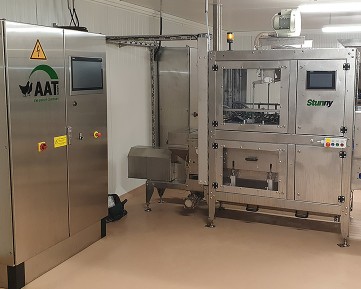
The challenge
Handling of rejected embryos
in an animal welfare friendly way
The aim of in ovo sex determination in chicken hatching eggs is to detect male embryos and terminate their development at an early stage of incubation to avoid culling day-old-chicks after hatch. None of the market-ready methods that are currently being used are applicable in the first trimester of incubation.
In the discussion about the onset of pain perception, the question arises as how to handle the rejected male embryos in methods that are used from the seventh day of incubation onwards. Although numerous studies point to a definite absence of pain perception in the chicken embryo in the first trimester of incubation, there are no reliable findings on pain perception in the chicken embryo for the period of the second trimester of incubation. For sex determination methods that are used after the seventh day of incubation, a solution is sought to interrupt the development of the male embryos in an animal welfare friendly and consumer acceptable manner.
The solution
Electrical anaesthesia of male
embryos in the egg with STUNNY
In scientific studies it was proven that embryonic reactions associated with possible awareness of pain were absent in 99.3% of the examined embryos after perfusion with 110 Volt over two seconds (ZUMBRINK et al., 2020*). On this basis the high-throughput machine STUNNY was developed and evaluated in collaboration with the German Training and Consultancy Institute for animal welfare at transport and slaughter (bsi Schwarzenbek).
The fully automated STUNNY anaesthesia unit is adjacent to the output of male embryos from the CHEGGY unit. Inside the STUNNY, the male embryos are anesthetized by electric current flow to eliminate any possible pain sensation for the embryos at the interruption of development.
*Zumbrink, L. et al. (2020). Electrical anaesthesia of male chicken embryos in the second third of the incubation period in compliance with animal welfare. European Poultry Science, 84. Available at www.european-poultry-science.com
Process steps
1. Neutral position
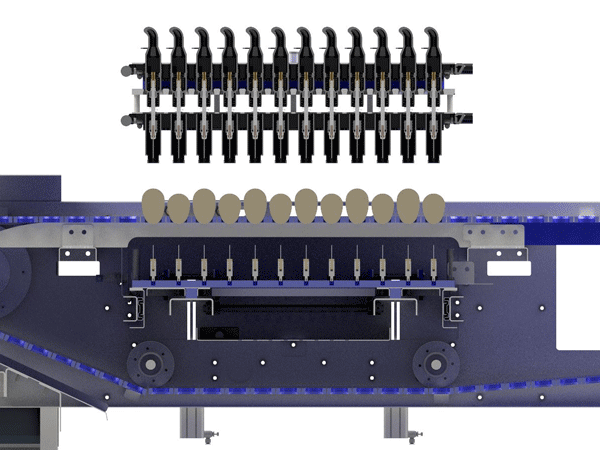
The conveyor belt transports the eggs to the stunning pins.
2. Egg fixation
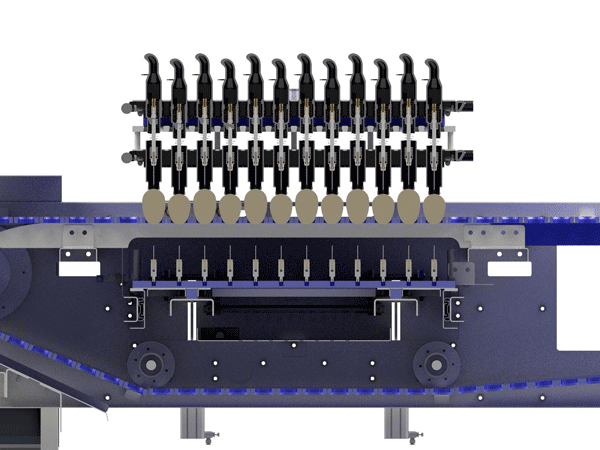
The stunning pin injectors will be positioned and locked. The position depends on the egg size.
3. Lower pin punch
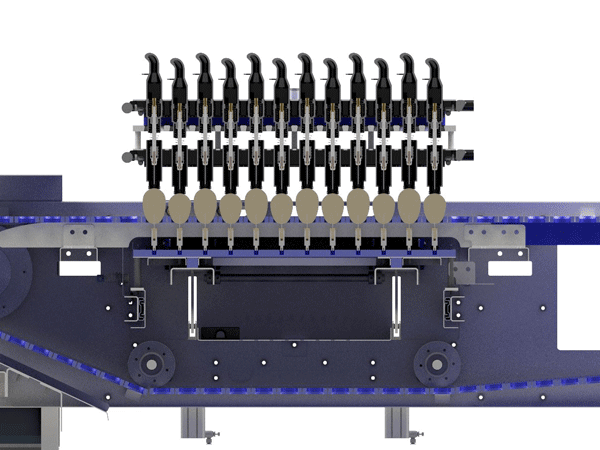
First, the bottom stunning pins penetrate the eggshell and connect with the egg fluid.
4. Top pin punch
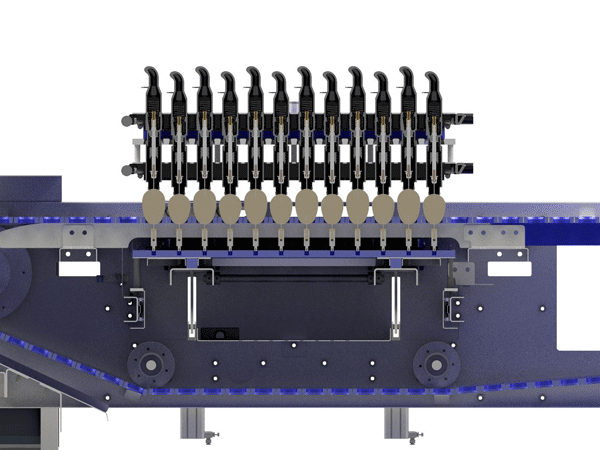
Then the top stunning pins penetrate the eggshell and connect with the egg fluid. Now the electrical stunning gets started.
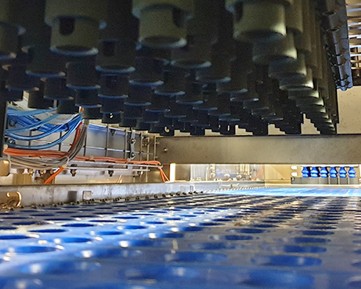
STUNNY
Advantages
STUNNY enables hatcheries to integrate the stunning of embryos in the egg in compliance with animal welfare during the second-third of incubation. The fully automated technique is based on a newly researched method and offers high throughput rates with maximum effectiveness simultaneously.
- Secure anaesthesia of embryos in the egg in seconds
- Throughput of up to 10,000 eggs per hour
- Camera-based position detection of hatching eggs
- Special egg fixation system for equal penetration depths with different egg sizes ensures maximum effectiveness
- Measurement and online documentation of the achieved current flow per individual egg
- Display of individual current flow rates, curve progressions or summarizing statistics on the display
- Complements the sex determination in the hatching egg with AAT‘s CHEGGY perfectly
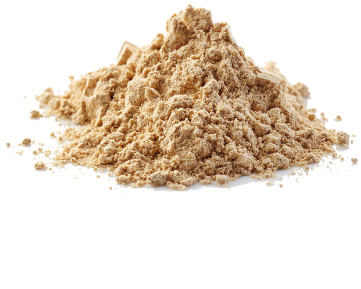
High-quality protein source
Use of the male embryos
The male embryos sorted out during in ovo sex determination are classified in category 3 for further use in accordance with EC Regulation 1069/2009. This results in the same possible uses as for unfertilized eggs. This is, for example, further processing into dried egg powder, which can be used as feed for pets and livestock or for applications in the cosmetics sector. This sensible usage of the sorted hatching eggs as a high-quality protein source makes the in ovo sexing a resource-saving and thus sustainable process.
